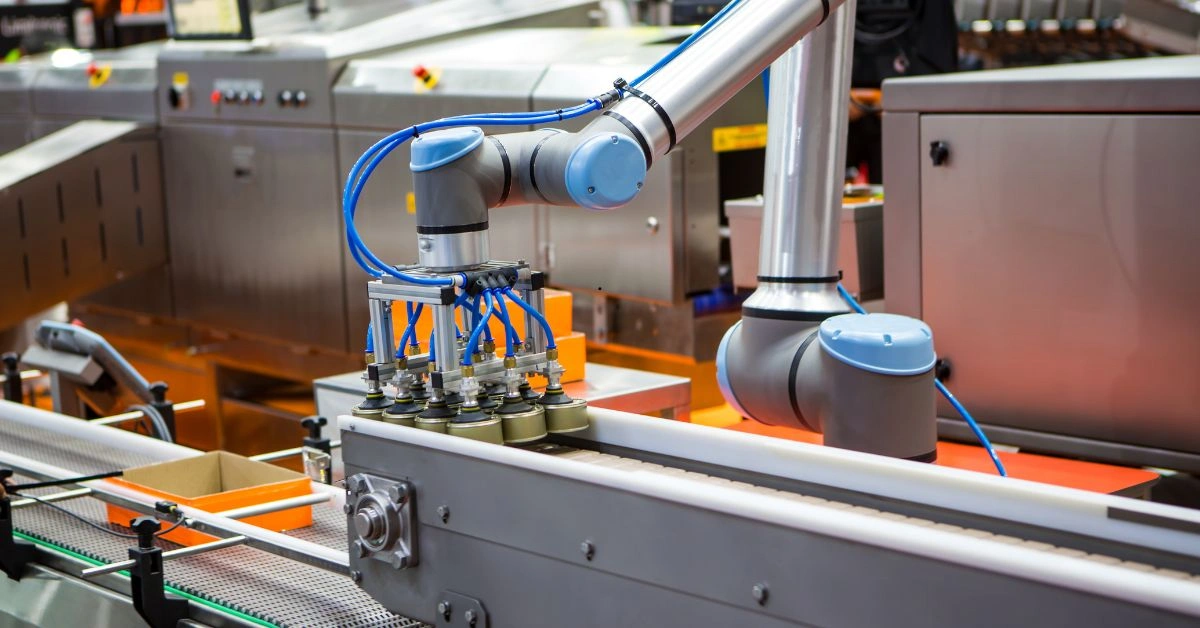Maximizing 70537865 Allis: Features, Benefits, and Future
70537865 Allis is a new and emerging technology that has caught the attention of various industries. It is designed to improve efficiency, productivity, and accuracy in specific fields. Many companies are now exploring how they can use 70537865 Allis to enhance their operations.
The origins of 70537865 Allis can be traced back to the need for better tools in the industrial sector. It was developed to address common challenges that businesses face in their day-to-day processes. Since its introduction, it has been adopted by several industries looking for innovative solutions.
70537865 Allis plays an important role in revolutionizing industrial technology. It offers a unique combination of features that set it apart from other tools on the market. Businesses that have implemented it are seeing noticeable improvements in their workflow and results.
What makes 70537865 Allis important is its ability to adapt to different industries and tasks. It is versatile, making it suitable for a wide range of applications. Whether you are in manufacturing, healthcare, or IT, 70537865 Allis can be tailored to meet your specific needs.
Industries using 70537865 Allis are experiencing enhanced performance and reduced costs. Its ability to streamline processes makes it an attractive solution for companies of all sizes. The growing popularity of 70537865 Allis is a testament to its effectiveness and potential.
In this guide, we will explore what makes 70537865 Allis unique. We will look at its features, applications, benefits, and future developments. By the end, you will have a clear understanding of how 70537865 Allis can impact your business or industry.
| Aspect | Facts | Figures |
|---|
| Purpose | Improves efficiency, productivity, and accuracy in industries. | Designed for specific fields like manufacturing, healthcare, and IT. |
| Origin | Developed to address challenges in industrial processes. | Gained adoption across multiple industries since introduction. |
| Key Features | – Automates routine tasks. – Real-time data analysis. – User-friendly interface. | Processes large data sets quickly. Ensures minimal errors. Reduces manual intervention. |
| Technical Specifications | – Robust hardware and software. – Supports high-speed, accurate tasks. | Handles large datasets. Continuous operation with minimal downtime. |
| Unique Selling Points (USPs) | – Adaptable across industries. – Cost-efficient. – Easy to use. | Delivers high performance at affordable costs. Minimal employee training needed. |
| Applications | Manufacturing: Automation and accuracy. Healthcare: Data management. IT: Server optimization. | Used in assembly lines, diagnostics, software testing, and deployment. |
| Scalability | Customizable to meet industry needs. | Suitable for small businesses and large enterprises. |
| Advantages | – Automation improves efficiency. – Minimizes errors. – Cost-effective. | Reduces labor costs. Boosts productivity. |
| Challenges | – Initial costs can be a hurdle. – Requires employee training. – Limited in certain tasks. | Long-term savings may outweigh upfront costs. Steep learning curve for some employees. |
| Comparison with Alternatives | More versatile and cost-effective than competitors. | Specialized tools may outperform it in niche areas. |
| Future Developments | – AI and machine learning integration. – Continuous improvements and updates. | Expansion into new industries and handling complex tasks. |
| Market Predictions | Increasing adoption across industries due to efficiency and cost-saving potential. | Expected to grow as businesses demand scalable, adaptable solutions. |
| Conclusion | Revolutionizes industrial processes with automation and accuracy. | Key player in modernizing business operations. |
Key Features and Components
Core Functionality
This technology is designed to perform tasks with a high level of precision and automation. It reduces the need for manual intervention, which helps cut down on errors and increases efficiency. Its core functionality lies in automating routine processes, allowing companies to focus on more strategic activities.
Its user-friendly interface makes it easy to integrate into existing workflows. Whether for small businesses or large enterprises, the system can be customized to fit the specific needs of the organization. Another key feature is real-time data analysis, which helps businesses make quick, data-driven decisions.
This tool also excels in managing large amounts of data quickly and accurately. It processes information in real-time, which is vital for industries that rely on up-to-the-minute data for decision-making. By speeding up data handling, the tool boosts overall productivity and helps businesses stay competitive.
Technical Specifications
This solution comes with robust hardware and software that ensure seamless operation. It is capable of handling high-speed tasks without sacrificing accuracy, making it perfect for high-demand environments. The system’s design strikes a balance between power and efficiency, allowing it to process large datasets or handle numerous tasks.
The software is built on a strong, reliable platform that supports multiple functions. Its ability to receive updates easily ensures that it remains relevant as technology advances. This makes the system a solid long-term investment for companies that want a solution that will grow with their business.
In addition, the technology is equipped with safety features to prevent malfunctions or breakdowns. It is designed to operate continuously with minimal downtime, making it reliable for industries that need round-the-clock performance.
Unique Selling Points (USPs)
One of the primary advantages of this tool is its ability to adapt across various industries. Whether in manufacturing, healthcare, or IT, its versatility makes it a great fit for a broad range of applications. Businesses appreciate its flexibility, which allows them to tailor the system to their specific operational needs.
Cost-efficiency is another major benefit. While the system offers top-tier performance, it does so at a price that is accessible to businesses of all sizes. It delivers exceptional value without requiring a large upfront investment, making it an attractive option for companies looking to improve their operations without breaking the bank.
Finally, ease of use is a significant advantage. The tool’s simple interface reduces the need for extensive employee training, allowing companies to get up and running quickly. This not only cuts down on onboarding time but also speeds up the realization of benefits.
Applications and Use Cases
Industry-Specific Applications
This tool has proven to be incredibly useful across a range of industries. In manufacturing, it helps to automate repetitive tasks, improving accuracy and reducing errors. It is commonly used in assembly lines, quality control, and other production areas to boost efficiency.
In the healthcare sector, the system supports tasks like data management and diagnostics. It can process large volumes of patient data quickly and provide accurate results that healthcare professionals can rely on. Hospitals and clinics benefit from its ability to streamline administrative tasks and improve patient outcomes.
In IT, the technology plays a key role in optimizing server performance and managing data centers. It is also used to automate processes in software development, such as testing and deployment, helping companies bring their products to market faster.
Business Use Cases
For businesses, the tool offers significant advantages in streamlining operations. It automates time-consuming tasks like data entry, scheduling, and inventory management. This allows businesses to reduce labor costs and focus on more strategic areas of their operations.
Small businesses especially benefit from its ability to handle routine tasks, freeing up resources for growth-related activities. Meanwhile, larger enterprises use the system to manage complex workflows and ensure smooth coordination across multiple departments. Its capacity to handle large-scale operations makes it a valuable asset for businesses of all sizes.
Scalability and Flexibility
One of the tool’s key strengths is its scalability. It can easily grow with a business, making it suitable for both startups and large enterprises. Companies can add or remove features as needed, ensuring the system remains aligned with their evolving requirements.
The technology is designed to integrate seamlessly into existing systems, regardless of company size. This flexibility ensures that it can adapt to a wide range of operational needs, making it a future-proof solution for businesses.
The system’s wide range of capabilities also ensures that it can handle everything from data processing to project management. It can be customized to meet a company’s unique needs, providing a tailored solution for different business models and industries.
Benefits and Challenges
Advantages
This system offers numerous benefits, particularly in terms of automation and accuracy. By taking over repetitive, time-consuming tasks, it helps businesses operate more efficiently. Its precision ensures that errors are minimized, which leads to consistent results and improved output.
Efficiency is another significant advantage. The tool enables businesses to complete tasks in less time, resulting in cost savings. For companies looking to optimize their workflows, this solution provides a clear path to achieving that goal.
The tool is also highly adaptable, making it suitable for a wide variety of industries. Whether in healthcare, IT, or manufacturing, businesses can customize the system to suit their specific needs.
Challenges
Despite its many advantages, implementing this solution comes with a few challenges. The initial cost may be a barrier for some companies, especially smaller businesses. Although it offers long-term savings, the upfront investment may be a hurdle for some organizations.
Another potential challenge is the learning curve for employees. While the system is user-friendly, staff may still need time to become fully comfortable with it. This could delay adoption and slow down initial operations until teams are fully trained.
Additionally, there are certain tasks that still require manual oversight. While the system excels at automation, it may not be suitable for every process. Businesses need to be aware of its limitations to get the most out of it.
Comparison with Alternatives
Compared to other tools on the market, this solution stands out for its flexibility and wide range of applications. While competing systems may be tailored to specific tasks, this one offers more versatility. This makes it a strong option for companies looking for a multi-purpose tool.
It is also more cost-effective than many alternatives. Other solutions often come with high maintenance fees or expensive upgrades, but this system is designed to be affordable and low-maintenance. Its balance of performance and cost makes it a popular choice across industries.
However, some specialized tools might outperform it in niche areas. Depending on a business’s specific needs, other systems could be a better fit for highly specialized tasks. Evaluating all options is essential before making a decision.
Future Outlook
Future Developments
This technology is expected to see continuous improvements in the coming years. Developers are already working on adding new features that will enhance its capabilities even further. These updates will keep the tool relevant as industries evolve and new demands arise.
Future advancements in AI and machine learning may also expand its range of applications. As these technologies develop, the system will be able to handle even more complex tasks with greater accuracy. This opens up exciting possibilities for its future use in different sectors.
The tool is also likely to become more integrated with other systems as businesses adopt new technologies. Its ability to evolve and adapt will ensure it remains a vital part of business operations for years to come.
Market Predictions
The market for this tool is expected to grow as more industries recognize its value. Companies across different sectors are seeking ways to improve efficiency and reduce costs, and this solution fits perfectly into that need. Its scalability and flexibility will drive widespread adoption.
As more businesses expand, they will need tools that can manage increasing complexity. This technology is well-positioned to meet that demand, making it a valuable investment for businesses of all sizes. Its ability to adapt to new challenges ensures it will remain a key player in the market.
New industries are also likely to explore the benefits of this technology. As it continues to improve, sectors that haven’t yet adopted it may start to integrate it into their operations, driving further growth and innovation.
Conclusion
This technology is a powerful tool that helps businesses automate processes, improve efficiency, and reduce costs. Its adaptability makes it suitable for a wide range of industries, and its benefits include increased productivity and cost savings. As more companies recognize its value, it is set to become a key part of modern business operations.
Continuous developments and upgrades will only enhance its capabilities, making it an even more valuable investment in the future. For businesses looking to stay competitive
FAQs
What industries can benefit from this technology?
This technology is beneficial for various industries, including manufacturing, healthcare, IT, and logistics. It enhances efficiency and productivity by automating tasks specific to each sector.
Is the technology easy to use?
Yes, the technology is designed with user-friendliness in mind. While minimal training is required, employees can quickly become proficient with its features, allowing for smooth implementation.
What makes this technology stand out from competitors?
Its versatility, cost-effectiveness, and broad range of applications make it stand out. Unlike other tools that may focus on niche tasks, this technology can be customized to fit diverse operational needs across different industries.
What are the initial costs associated with this technology?
The initial costs may include purchasing the system and integrating it into existing processes. While there is an upfront investment, the long-term savings and efficiency gains often outweigh these initial expenses.
How does this technology handle future updates and advancements?
The system is designed to accommodate future updates and advancements. It supports easy upgrades, ensuring it remains effective as new technologies and features become available.





